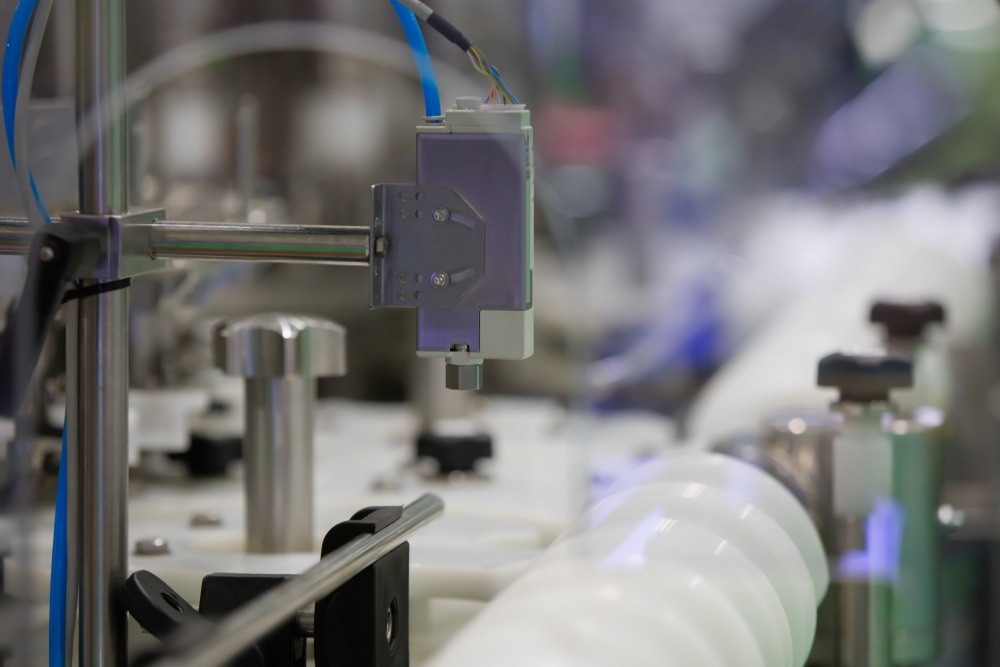Photodetectors are useful because they convert photons into electrical signals. However, certain shortcomings in terms of wide-angle imaging for spherical-shaped photo sensors have been reported. The study published in the journal Nature Communications discusses a novel 2D quasi-perovskite hemispherical photonic sensor optimized for wide-angle imagery.

Study: Spray-coated perovskite hemispherical photodetector featuring narrow-band and wide-angle imaging. Image Credit: MOLPIX/Shutterstock.com
Traditional Photodetectors and their Shortcomings
Highly sophisticated photo-detection sensors monitoring specific wavelengths have been employed in a variety of industries, especially perioperative surgical treatments, remote monitoring systems, and facial recognition systems.
However, the major hurdle for planar photodetectors is their limited imaging angle, which is only 60 degrees. The fisheye lens increased this value to around 180°, but the complicated optical pathway added to the cost of the embedded wide-angle sensitive detector. Considering these problems, the use of spherical sensors was necessary.
Hemispherical Photo Sensors and their Limitations
A hemispherical-shaped sensor, primarily inspired by fisheye and compound-eye design, provides an adequately wide visual angle. However, certain challenges still need to be addressed.
The major hurdle is the deposition of a soluble active layer on the non-planar platforms for fabricating photodetectors operational on a specific wavelength along with a broad viewing angle. Additionally, the cost issues and low deposition speed associated with gas vapor deposition of semiconductor substances on the substrate surface must be addressed.
An Overview of Spray Coating Technique
Spray-coating is an established technique that has had widespread application in automotive varnishing and marine corrosion inhibition treatment. This low-cost solution technique deposits multilayer thin films on irregularly shaped surfaces optimally. Unlike spin coating or other previous processes, spray coating is not constrained by the geometry of the platform.
Furthermore, spray-coating is a pneumatically operated coating technique, and discharged solvents typically vaporize extremely quickly before accumulating on the surfaces. Consequently, the succeeding film doesn't disintegrate the preceding coatings.
What are Quasi 2-D Perovskites?
Quasi-2D perovskites are made up of alternating inorganic and organic layers. The blend of superior charge carrier dynamics (3-D perovskite material benefits) and the exceptional stability of the 2-D counterpart is a primary reason for their excessive utilization in modern electronics.
Their distinct photoelectric features, variable energy band gap, and defect endurance make them appealing for use in photovoltaic devices, light-emitting diodes (LEDs), X-ray scanners, and optoelectronic devices.
Perovskite coatings fabricated via spray coating techniques for photovoltaic applications have been reported recently. Its most significant benefit is the homogeneous coating of photoactive layers on randomly oriented substrates, which has never been thoroughly explored.
Article Overview
The article describes spray coated spherical perovskite photonic sensor made of phenyl ethyl ammonium/formamidinium lead halide (PEA2FAn-1PbnX3n+1). The researchers utilized the Perovskite formulations to regulate the crystallization rate. Cyclic spray-coating and the solution concentration were used to control the coating thickness from a few nanometers to hundreds of micrometers.
Spray Coating of Perovskite Films
For consistent layer thickness, the substrate was rotated during spray coating. Before deposition, hemispherical platforms with thoroughly cleansed edges were placed on a hot plate. High-speed nitrogen (N2) gas was used to exfoliate the surfaces and expedite the crystallization of the coatings. To enhance crystallization quality, the sheets were ultimately thermally treated. The films' surfaces were refined to create a smooth and compact coating with minimal surface flaws.
Chromium (Cr) electrodes were mounted on commercialized hemispherical glass substrates to increase surface adherence to build a hemispherical device.
Research Findings
The poor conductance of the bottom Cr electrodes contributed to a lower cut-off ratio of hemispherical devices when compared to planar devices. The photocurrent of the device was measured about the incident light angle to investigate the wide-angle detection accuracy.
Upon diverse light incidence angles between 0° and 90°, the hemispherical sensor displayed autonomous photon energy. However, because of the restricted light absorption at slanted orientations, the photocurrent of the planar sensor proportionally reduced with the incident angle.
A model of a swan was used for imaging studies. A clear image of a swan was captured in the right panel when the object was placed at a viewing angle between 90° and -52°. The image had the same viewing angle range of -8° to 30° and had a spatial resolution of 1.78 lp mm-1. The benefits of a hemispherical photocell are shown by the fact that the planar device completely lost signal at a viewing angle of about 90 degrees and could only capture a half-image of the swan.
In short, a rapid spray-coating procedure was used to create a perovskite hemispherical photodetector that can execute lens-free scanning at nearly 180°, considerably decreasing the reliance on complex optical components.
More from AZoM: How are Bioplastics Made?
Reference
Feng, X. et al. Spray-coated perovskite hemispherical photodetector featuring narrow-band and wide-angle imaging. Nat Commun. 13. 6106. Available at: https://doi.org/10.1038/s41467-022-33934-1
Disclaimer: The views expressed here are those of the author expressed in their private capacity and do not necessarily represent the views of AZoM.com Limited T/A AZoNetwork the owner and operator of this website. This disclaimer forms part of the Terms and conditions of use of this website.